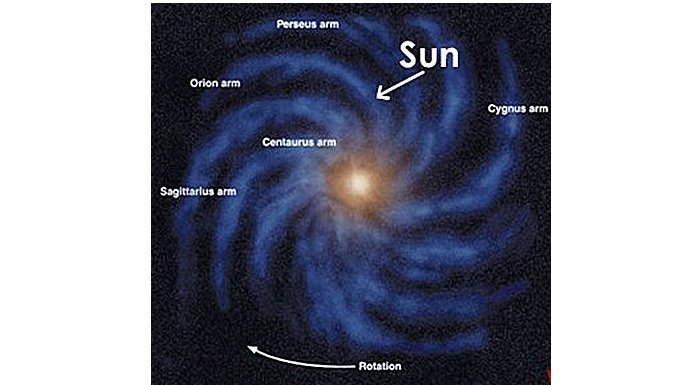Voynich Manuscript: Ancient Book Nobody Is Able To Read
AncientPages.com - The nature and origin of the manuscript have long remained a mystery. Few ancioent manuscripts have caused as much controversy and debate as the mysterious Voynich manuscript. Is it a hoax or a genuine book? It seems the verdict is still out on this puzzling manuscript.
This ancient medieval text is a cryptic document written by an unknown author.
Plenty of skilled cryptographers have studied the document and many attempts have been made to crack the code. Many experts have said it is impossible to decipher the medieval text, but maybe the term “impossible” is over-used by us humans?
Over the years, the Voynich manuscript has caused a lot of controversy and debate. This ancient medieval text is a cryptic document written by an unknown author.
Many skilled cryptographers have studied the document. Their attempts to break the code failed. Up to now, none of them has been able to crack the code.
It is worth mentioning that at the end of WWII the U.S. military passed some spare time encrypting ancient texts. They managed to decipher every text except the Voynich manuscript, which is written with an unknown script system.
Does the Voynich manuscript really contain a message? Are we unable to break the mysterious code? Is the book a deliberate hoax? Is it an encoded version of a known language or a totally invented language?
A new study suggests that the manuscript holds a genuine message.
Researchers say that while the text written on medieval parchment shows basic statistical patterns that bear resemblance to those from real languages, there are features that make the manuscript a hoax. The manuscript was named after Wilfrid M. Voynich, a Polish-American book dealer who found this manuscript in a chest in the Jesuit College at the Villa Mondragone, in Frascati in 1912.
He bought it from the Jesuits, and gave photographic copies to a number of experts to have it deciphered. None of them succeeded. Certain features in the illustrations, such as hairstyles for example, suggested that the book was produced between 1470 and 1500.
But by whom and why?
Inside the manuscript, which is 240 pages long, there was a 17th century letter, written by Johannes Marcus Marci of Cronland, a Bohemian doctor and scientist, rector of the University of Prague, and official physician to the Holy Roman Emperors.
The paper dated 1666, was addressed to Athanasius Kircher, a 17th-century German Jesuit scholar and informed that the manuscript was bought by Emperor Rudolph II in 1586.
During the 1600s, some scholars attempted to decipher the script. Then the mysterious manuscript disappeared for 250 years before Voynich discovered it.
Voynich was also eager to learn more about his new remarkable finding, but establishing the origin of the book and deciphering the code, was a much more complex task than he anticipated.
According to a theoretical physicist, Dr Marcelo Montemurro from the University of Manchester, UK, the "manuscript presents a complex organization in the distribution of words that is compatible with those found in real language sequences.
"We are also able to extract some of the most significant semantic word-networks in the text. These results together with some previously known statistical features of the Voynich manuscript, give support to the presence of a genuine message inside the book."
Dr Montemurro and his team used a computerised statistical method to analyse the text and focused on patterns of how the words were arranged in order to extract meaningful content-bearing words.
"There is substantial evidence that content-bearing words tend to occur in a clustered pattern, where they are required as part of the specific information being written," he explains.
"Over long spans of texts, words leave a statistical signature about their use. When the topic shifts, other words are needed. The semantic networks we obtained clearly show that related words tend to share structure similarities. This also happens to a certain degree in real languages."
Dr Montemurro argues that the hoax hypothesis cannot possibly explain the semantic patterns he has discovered. He believes it unlikely that these features were simply "incorporated" into the text to make a hoax more realistic, as most of the required academic knowledge of these structures did not exist at the time the Voynich manuscript was created.
"While the mystery of origins and meaning of the text still remain to be solved, the accumulated evidence about organization at different levels, limits severely the scope of the hoax hypothesis and suggests the presence of a genuine linguistic structure," scientists say in their paper.
Those who believe in the authenticity of the Voynich manuscript maintain that the script is far too complex to be a hoax. Skeptics on the other hand, suggest that the failure of the code breaking indicates there might be no code to decipher and no hidden message.
There is also a possibility that the manuscript is not a code, but rather an unidentified language and of course, as usual it is very convenient to dismiss certain uncomfortable findings as hoaxes simply because we do not understand their origin and meaning.
Copyright © AncientPages.com All rights reserved. This material may not be published, broadcast, rewritten or redistributed in whole or part without the express written permission of AncientPages.com
Expand for referencesReferences:
More From Ancient Pages
-
 More Than A Meteorite: New Clues About The Demise Of Dinosaurs
Paleontology | Dec 5, 2023
More Than A Meteorite: New Clues About The Demise Of Dinosaurs
Paleontology | Dec 5, 2023 -
 Tuatha de Danann – ‘Gods’ Of Ireland And The Myth Of Danae And Zeus – Could The Early Irish Celts Have Ties To Ancient Greece?
Celtic Mythology | Mar 28, 2017
Tuatha de Danann – ‘Gods’ Of Ireland And The Myth Of Danae And Zeus – Could The Early Irish Celts Have Ties To Ancient Greece?
Celtic Mythology | Mar 28, 2017 -
 On This Day In History: Sweden Declares War On Its Ally The United Kingdom – On Nov 17, 1810
News | Nov 17, 2016
On This Day In History: Sweden Declares War On Its Ally The United Kingdom – On Nov 17, 1810
News | Nov 17, 2016 -
 Cyclops – First Generation Of Giants Who Were Prisoners Of Tartarus
Featured Stories | Mar 21, 2018
Cyclops – First Generation Of Giants Who Were Prisoners Of Tartarus
Featured Stories | Mar 21, 2018 -
 Top 10 Archaeological Discoveries 2023
Archaeology | Dec 27, 2023
Top 10 Archaeological Discoveries 2023
Archaeology | Dec 27, 2023 -
 Mysterious Object In Asuka – The Place Of ‘Flying Birds’
Civilizations | Aug 11, 2018
Mysterious Object In Asuka – The Place Of ‘Flying Birds’
Civilizations | Aug 11, 2018 -
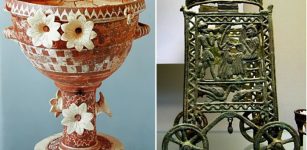 Minoans: Highly Advanced Bronze Age Civilization Of Europe
Featured Stories | Sep 23, 2023
Minoans: Highly Advanced Bronze Age Civilization Of Europe
Featured Stories | Sep 23, 2023 -
 Sami People: Facts And History About The Only Indigenous People Of Most Northern Europe
Civilizations | Sep 25, 2016
Sami People: Facts And History About The Only Indigenous People Of Most Northern Europe
Civilizations | Sep 25, 2016 -
 New Evidence Of Human Habitation At Panga ya Saidi Cave, Kenya That Dates Back 78,000 Years
Archaeology | May 11, 2018
New Evidence Of Human Habitation At Panga ya Saidi Cave, Kenya That Dates Back 78,000 Years
Archaeology | May 11, 2018 -
 Story Behind The Two Keys On Vatican’s Flag
Ancient History Facts | Feb 28, 2018
Story Behind The Two Keys On Vatican’s Flag
Ancient History Facts | Feb 28, 2018 -
 Sacred Bird Garuda And Stealing Of Amrita Drink Of Immortality From The Gods
Featured Stories | Jun 5, 2019
Sacred Bird Garuda And Stealing Of Amrita Drink Of Immortality From The Gods
Featured Stories | Jun 5, 2019 -
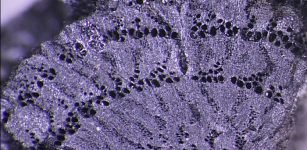 Ancient Tell-Tayinat Inhabitants And Climate Change Resilience – New Study
Archaeology | Oct 30, 2020
Ancient Tell-Tayinat Inhabitants And Climate Change Resilience – New Study
Archaeology | Oct 30, 2020 -
 4,500-Year-Old Skeletons Found In SW China
Archaeology | Apr 19, 2016
4,500-Year-Old Skeletons Found In SW China
Archaeology | Apr 19, 2016 -
 Castlerigg Stone Circle: One Of Britain’s Most Important And Earliest Stone Circles
Featured Stories | Apr 16, 2019
Castlerigg Stone Circle: One Of Britain’s Most Important And Earliest Stone Circles
Featured Stories | Apr 16, 2019 -
 Intrepid Southern Voyage In The Wake Of Early Waka
Archaeology | Jun 28, 2023
Intrepid Southern Voyage In The Wake Of Early Waka
Archaeology | Jun 28, 2023 -
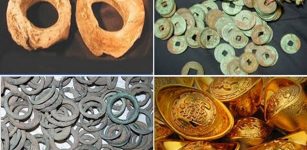 Our Lives Have Always Been Manipulated By Money – Part 3
Featured Stories | Jun 8, 2022
Our Lives Have Always Been Manipulated By Money – Part 3
Featured Stories | Jun 8, 2022 -
 Evidence Of Unknown Ice Age Civilization Discovered In Michigan Ignored By Pipeline Company!
Archaeology | Oct 16, 2020
Evidence Of Unknown Ice Age Civilization Discovered In Michigan Ignored By Pipeline Company!
Archaeology | Oct 16, 2020 -
 Cats Were Rare And Expensive During The Viking Age – Spectacular Discovery Reveals Why
Featured Stories | Jan 12, 2017
Cats Were Rare And Expensive During The Viking Age – Spectacular Discovery Reveals Why
Featured Stories | Jan 12, 2017 -
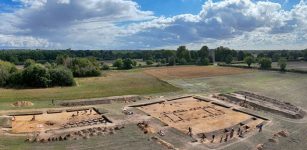 Huge 1,400-Year-Old Hall Of The First Kings Of East Anglia Discovered In Rendlesham
Archaeology | Oct 5, 2022
Huge 1,400-Year-Old Hall Of The First Kings Of East Anglia Discovered In Rendlesham
Archaeology | Oct 5, 2022 -
 Advanced Ancient Technology – Talos A Greek Robot Created By The God Of The Forge
Featured Stories | Jun 28, 2014
Advanced Ancient Technology – Talos A Greek Robot Created By The God Of The Forge
Featured Stories | Jun 28, 2014



